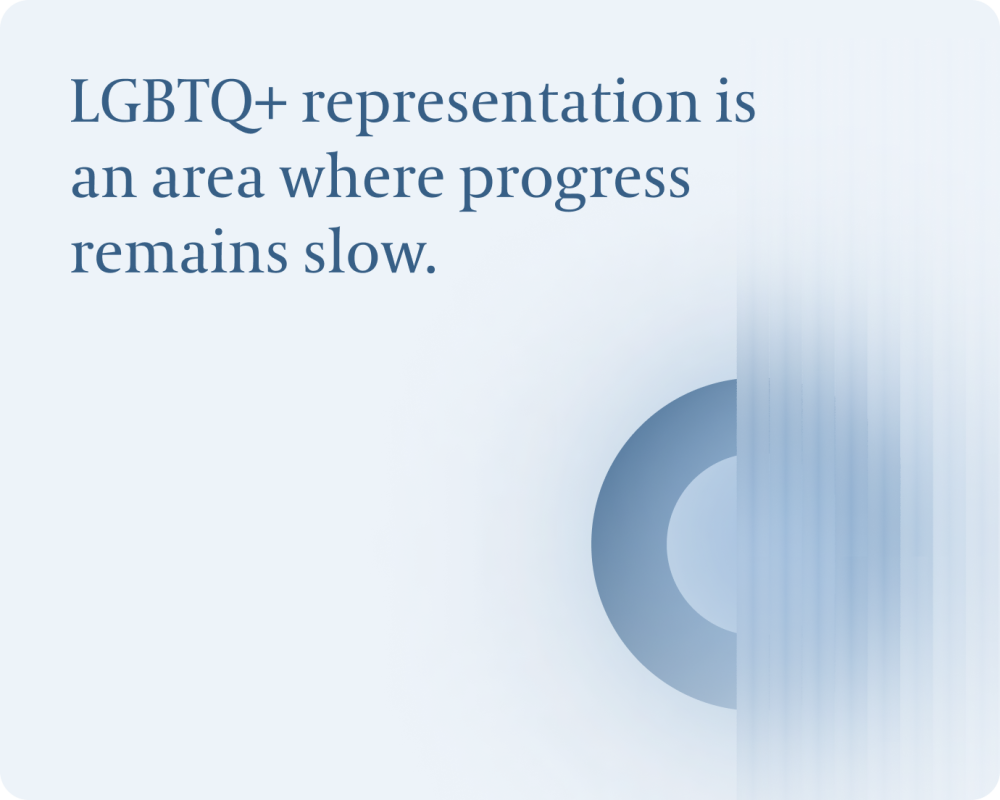For 20 years, Egon Zehnder has tracked board diversity around the globe, witnessing many milestones, steps forward, and setbacks. The path to progress has been uneven at times but incremental gains have been constant. Over the span of 12 years, from 2012 to 2024, the percentage of board positions held by women globally has risen steadily from 13.6 % to 29.3%, with an average increment of 2.6% change every two years.
We have also seen external social forces influence the pace of change. For example, 2017’s #MeToo movement and 2020’s racial equity protests both prompted global surges in corporate DEI commitments that often led to representational increases in the following years:
- Globally the number of companies that have a woman on the board rose from 84.9% in 2018 to 96% in 2024.
- In 2020, black directors comprised about 5% of directorships of Russell 3000 companies, and in 2022 that number rose to 8.1%.
Now, the pendulum is swinging again. Trends beget countertrends, and a dissenting opinion has emerged, with programs designed to increase diverse representation in business under attack in social media and even in some courtrooms, particularly in the US. There are some indications that the shift to defending DEI rather than promoting it has created a chilling effect. When we examined the number of new female directors appointed globally in 2024, there was a considerable drop in the percentage of appointments made: from 17.2 % of appointments in 2020 to 16.3% in 2022 and now 14.2% in 2024. Additionally, there has been a decrease in appointments of ethnic and racial minority directors. Looking at new directors in the S&P 500, people of color represented 34.1% of new board members in 2022, that number fell to 24.2% in 2024.
Still, some media outlets are quick to draw early conclusions—that “DEI is dead”—when the evidence reveals a different story. What we see is a more contested DEI terrain. And while this threatens to stall progress, it also presents another opportunity to reframe the focus and goals of diversity and inclusion to respond to this moment in time and sustain change.
Board Diversity Data from C-Suite and Board Leaders
Board Diversity Data from C-Suite and Board Leaders
Our conversations with C-suite and board leaders indicate that they are continuing to work toward more diverse representation and greater inclusion, even if they may be more moderated in their tone and pace. In our experience, executives still consider diversity critical to their business performance and expect these efforts to become more important over the next few years. Many companies are taking this inflection point to refresh their approaches toward achieving greater inclusion of all forms of diversity.
To me, it seems clear that the questions raised by DEI critics present potential opportunities for innovation, not deletion.
 Cynthia SoledadGlobal Head of DEI at Egon Zehnder
Cynthia SoledadGlobal Head of DEI at Egon Zehnder
Our new data on board diversification and inclusion supports our overall finding of gradual, incremental progress that has slowed down somewhat but continues:








However, representation is just the first step.
The increasingly important, looming goal is for boards to create more inclusive cultures in order to leverage the increase in diverse representation around the table. It is largely the Chair’s responsibility to take the lead in building more inclusive board culture and practice. They and other leaders recognize that more inclusive, adaptable organizations are critical for addressing big challenges such as widespread market disruption, climate change and AI. The modest uptick in functional diversity on boards is potentially a response to this need and a solid first step in this direction. Much more work will be needed.
Our 2024-2025 Global Board Diversity Tracker shows the progress that has been made over the last 20 years in diversifying boards. We hope it continues.





